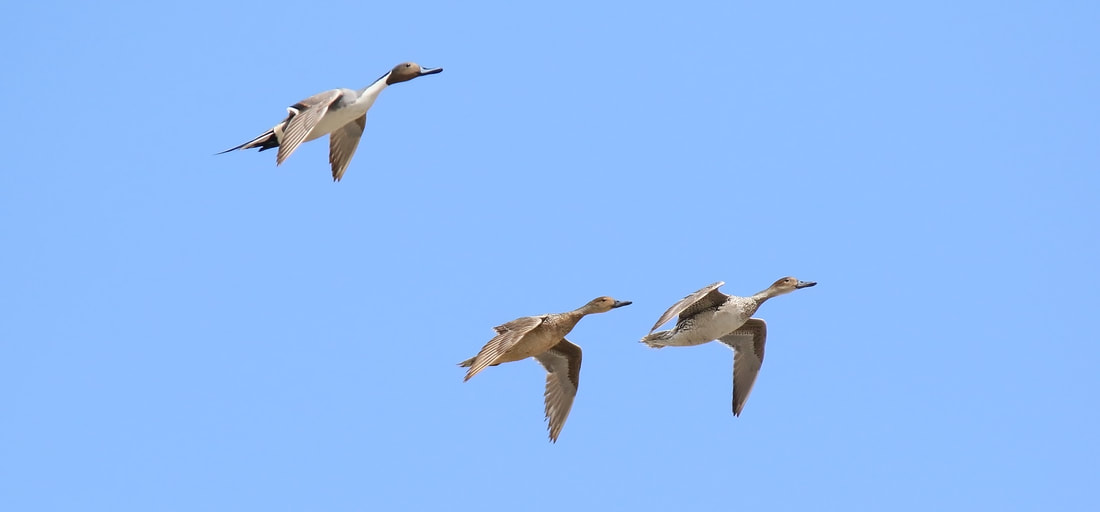|
With the ‘firebreak’ lockdown ending on a day of fine late autumn weather, I spent Monday on Anglesey, watching the incoming tide pushing hundreds of Pintails close to Malltraeth Cob. It’s always been one of my favourite places to watch these elegant ducks with its long central tail feather that looks as though it has been waxed to a fine point by Salvador Dali’s barber. Pintails are global travellers, some moving from the Arctic Circle to West Africa. Ringed birds have been found in Wales from Estonia and one ringed in Wales was subsequently found in Iceland. North Wales is an important wintering area for Pintails: the Dee Estuary regularly holds more than 10% of the northwest European wintering population, and the upstream Dee flood meadows and Traeth Bach near Porthmadog are nationally-important too.
Over the weekend, six Great White Egrets were in fields east of Llyn Alaw and others near Trefnant and Llanfairfechan. Whooper Swans were seen arriving from Iceland at several sites, including 13 on Anglesey’s Inland Sea, three tracked by birders along the coast from the Little Orme to Cors Goch, and the first of the winter on their regular wintering fields near Llanerchymedd. Most wader migration is over, but a Grey Phalarope fed briefly in the surf near Colwyn Bay’s new pier and a Spotted Redshank was ‘heard’ overnight by recording equipment over a Penrhyn Bay garden. The first Woodcocks arrived at the weekend too. With no golfers on Conwy golf course, a Short-eared Owl hunted the rough and at least one quartered over saltmarsh west of Llanfairfechan, though a second bird was found dead there last week. A couple of Black Redstarts are in northeast Anglesey and another was at Uwchmynydd, while late summer migrants include a Wheatear on the Great Orme and a Swallow at Foryd Bay.
0 Comments
Leave a Reply. |
Bird notesA weekly update of bird sightings and news from North Wales, published in The Daily Post every Thursday. Archives
July 2024
Categories |

 RSS Feed
RSS Feed
